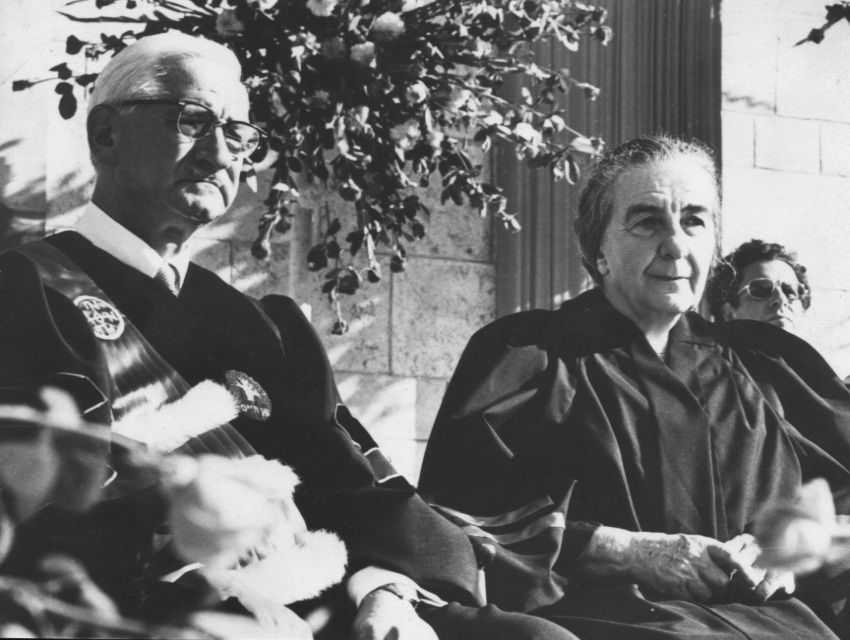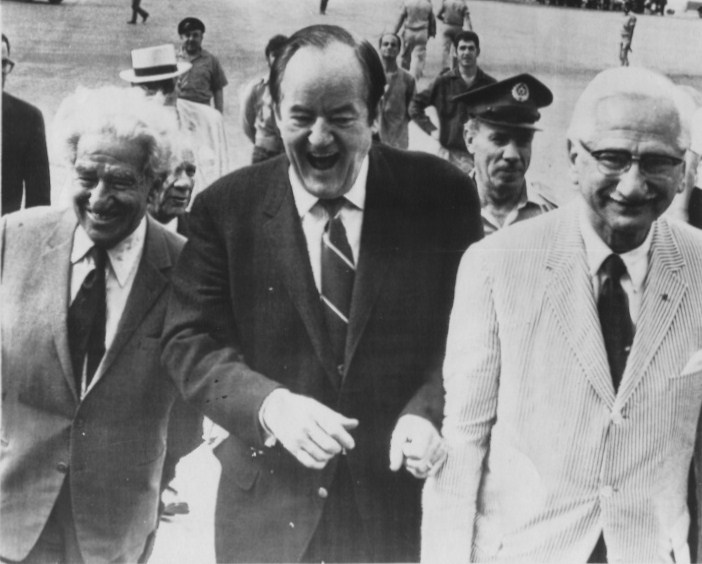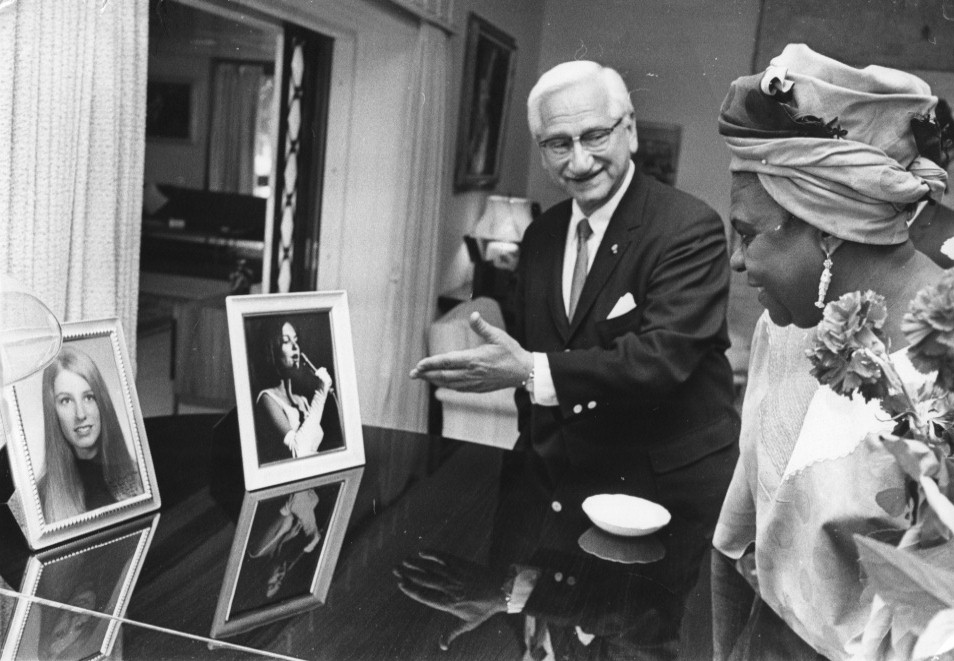After Dr. Sabin’s long career at the University of Cincinnati and the Children’s Hospital Research Foundation, he became the President of the Weizmann Institute of Science in Rehovot, Israel, from 1970 until 1972. His archives contain much of his correspondence and photographs from his time at the Institute.
According to the Weizmann Institute of Science’s website, Dr. Sabin was the first President of the Institute that was required to be a scientist. While serving as President, Dr. Sabin reorganized the Institute into “five scientific Faculties”: Mathematics, Physics, Chemistry, Biophysics-Biochemistry, and Biology. While serving as President, Dr. Sabin rubbed elbows with some pretty important people, so I wanted to share some of these photographs with you.
The photograph above is of Dr. Sabin with Golda Meir at his inauguration as President of the Institute. Golda Meir was the Prime Minister of Israel from 1969 until 1974.
The next photograph, seen here on the right, is Dr. Sabin with former United States Vice President Hubert Humphrey. Vice President Humphrey was at the Weizmann Institute of Science to receive an honorary degree in 1970. Dr. Sabin and U.S. Vice President Humphrey are seen here with Chancellor Meyer Weisgal.
Finally, the third photograph (seen below) shows Dr. Sabin at the Weizmann Institute of Science President’s home in 1970. He is seen with Madame Angie Brooks, a Liberian diplomat, who was President of the United Nations General Assembly at the time.
In the future, I will be taking a closer look at some of Dr. Sabin’s correspondence from his time at the Weizmann Institute of Science for this blog. Do you have any suggestions for topics I should cover?
In 2010, the University of Cincinnati Libraries received a $314,258 grant from the National Endowment for the Humanities (NEH) to digitize the correspondence and photographs of Dr. Albert B. Sabin. This digitization project has been designated a NEH “We the People” project, an initiative to encourage and strengthen the teaching, study, and understanding of American history and culture through the support of projects that explore significant events and themes in our nation’s history and culture and that advance knowledge of the principles that define America. Any views, findings, conclusions, or recommendations expressed in this blog do not necessarily reflect those of the National Endowment for the Humanities.



